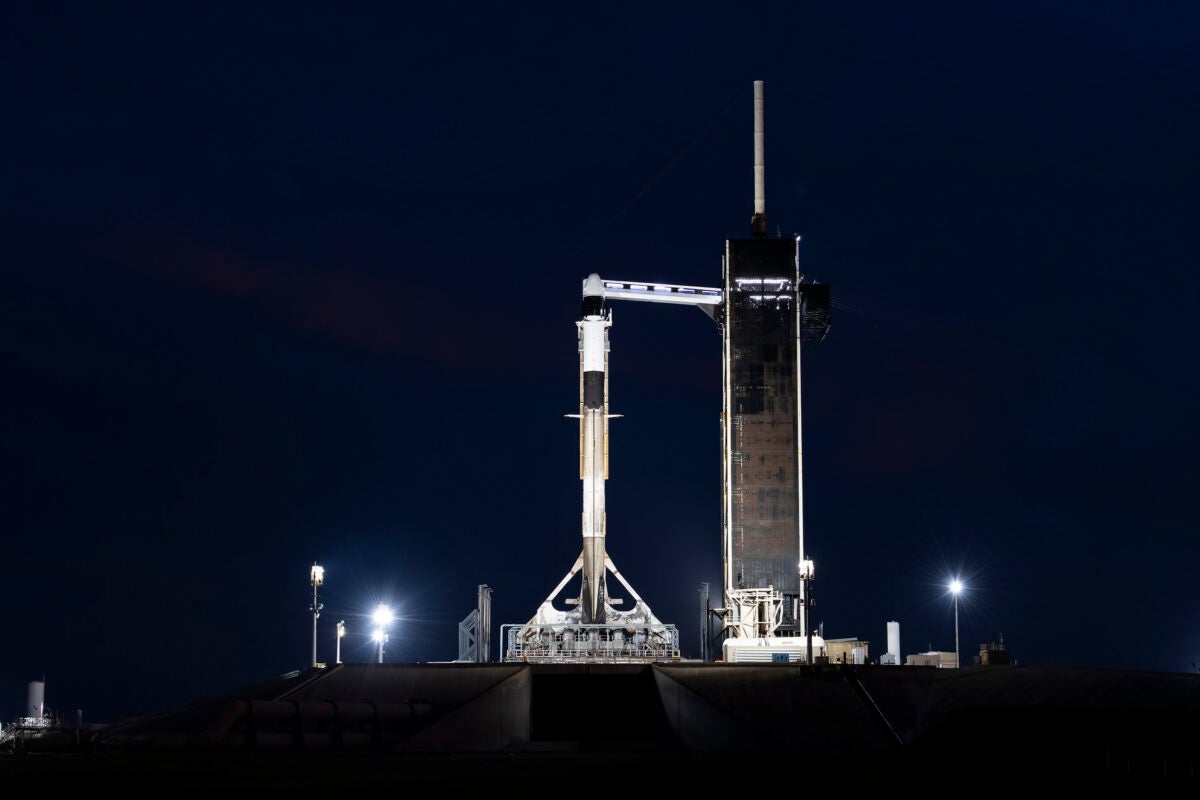The historic mission will see private astronauts attempt a spacewalk for the first time in history, and spaceflight enthusiasts can watch it live.

The Polaris Dawn mission will the first all-private mission to feature a spacewalk. Credit: SpaceX
In the early hours of Tuesday morning, SpaceX plans to launch four civilian astronauts on its most experimental and risky human spaceflight yet. And you can follow along as the crew attempt feats that haven’t been achieved in more than half a century — or ever.
Polaris Dawn, a five-day orbital mission purchased from the company by Jared Isaacman, the billionaire CEO of Shift4 Payments, is scheduled for lift off from Launch Complex 39A at NASA’s Kennedy Space Center in Florida no earlier than 3:38 a.m. EDT Tuesday morning. Backup launch opportunities are available at 5:23 a.m. EDT and 7:09 a.m. EDT, with the same approximately four-hour window open Wednesday morning.
Spaceflight enthusiasts can watch as SpaceX streams the launch and mission highlights — including the first attempt at a civilian spacewalk — live on its website, X account, and YouTube channel. Coverage will begin 3.5 hours before takeoff. The company and Isaacman’s Polaris Program will post mission updates on their websites and social media feeds.
Why this mission matters
Polaris Dawn’s four-person crew comprises Isaacman and retired Air Force pilot Scott “Kidd” Poteet, as well as SpaceX engineers Sarah Gillis and Anna Menon, who will be the first company employees to actually reach space. They will hitch a ride on SpaceX’s Falcon 9 rocket and circle the Earth in a modified version of the firm’s Crew Dragon capsule.
The Dragon — which in 2021 carried the first all-private astronaut crew on the Inspiration4 mission, also purchased by Isaacman — required a few major tweaks to support the historic private spacewalk. Arguably the riskiest portion of the mission, viewers will be able to witness it in real time.
Only two astronauts will exit the capsule, using newly installed mobility aids to perform tests on SpaceX’s specially designed extravehicular activity (EVA) spacesuits. The spacewalk is scheduled to happen on day three of the flight, which would be Thursday if it launches as planned.
“It will look like we’re doing a little bit of a dance,” said Isaacman last month, “[but] we’re going through a test matrix on the suit. And the idea is to learn as much as we possibly can about this suit and get it back to the engineers to inform future suit design evolutions.”
However, because Dragon lacks an airlock, all four crewmembers will be exposed to the vacuum of space. To prepare, NASA engineers “baked out” the capsule’s interior using what is essentially a giant oven. The objective was to burn off toxic chemicals that could be released when oxygen is vented from the cabin.
Plenty of work has gone into preparing the astronauts and their EVA suits too. In the two days leading up to the spacewalk, for example, crew members will perform what is known as a “prebreathe” to remove nitrogen bubbles that can form within body tissues, causing decompression sickness.
In addition, the astronauts have spent about 100 hours wearing their suits and thousands of hours preparing using simulators, vacuum chambers, and centrifuges. They’ve gone scuba diving and skydiving, flown fighter jets, and even summited Ecuador’s Cotopaxi, a nearly 20,000-foot (6,100 meters) peak.
Poteet, who flew Air Force fighters for nearly two decades and was a Thunderbird, said the regimen was “some of the most challenging training that I’ve ever experienced.”
Though it will not be live streamed, Polaris Dawn will also ascend to an orbital height not reached by humans since the Apollo 17 astronauts more than half a century ago. A few hours after launch on Tuesday, Dragon will fly to an apogee of 870 miles, passing through a portion of the treacherous Van Allen radiation belts.
The following day, live on orbit, Menon will read a children’s book she authored to her family and patients of St. Jude Children’s Research Hospital. Polaris Dawn in addition to being a research mission is a charitable endeavor, aiming to raise millions for St. Jude like Inspiration4 before it.
On the fourth day of the mission, there will also be a live demonstration of a special communication system in Dragon’s trunk, which uses laser beams to interact with Starlink satellites as they zip through space. SpaceX last month said the stream will be worth tuning into but did not provide specifics.
If all goes according to plan, Isaacman, Poteet, Gillis, and Menon will splash down at one of seven locations off the coast of Florida on Sunday.

